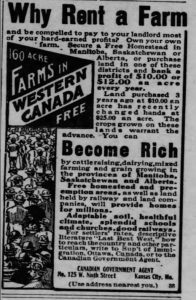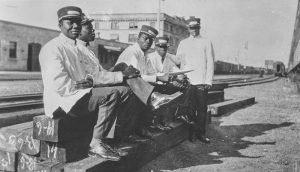Railway Legacy: Walter Modesty
While many of the stories you are reading in this online project come from the workers themselves, we also spoke to family members to share the experiences of their relatives. This was the case with SC Modiste, whose grandfather was Walter Modesty. Walter was a Black porter with the Grand Trunk Railway and, eventually, with Canadian National Railway.
Walter Modesty was born in 1870 in Kansas to parents who were once enslaved. His granddaughter, SC Modiste, was born just after he died in Toronto in the 1950s. This demonstrates how close the history of slavery is to our contemporary world.
SC Modiste describes her grandfather Walter as a fighter, an entrepreneur, a joker, and a charmer. He was motivated to have a family and land of his own. This guided his journey across the continent just as much as the discrimination and racism he experienced.
It took twelve years for Walter to make his way from Kansas City to Canada. During that time, he did many different jobs – he made the headlines when he was attacked while selling elixirs in 1896.
During this period, Canada recruited Americans to move north and settle in the Canadian West. This was an attractive offer to African Americans, who had so recently faced enslavement in the South. Walter settled in Junkins, Alberta (now Wildwood) and bought 160 acres for farming.
At The Beginning (captions available in both French and English). Enjoy this video with an English transcript.

Advertisements for settlement in Western Canada appeared in American newspapers at the end of the 19th and beginning of the 20th centuries.
While Walter was glad to have land of his own, farm work was hard, and he needed money. It was around this time that Walter started working for the Grand Trunk Railway as a porter. As we learned from Peter Taylor, porters were responsible for everything passengers could need onboard during their rail journey. SC Modiste told us that she believed that her grandfather thought that putting on the railway uniform was a status symbol. Porters were able to see the country, make money, and were protected, to some degree, by their employer.
The job may have been hard, but Walter’s granddaughter tells us in the video that this was an exciting time to be part of the railways. We may consider them to be old-fashioned or the slow way to travel today, but railways and trains were the newest technologies in the late 1800s. Walter was part of an industry with a growing future.


